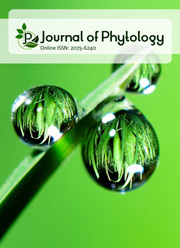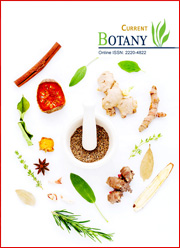Effect of culture media and auxin on growth and betalain accumulation in the hairy root cultures of red chard (Beta vulgaris L. var. cicla)
DOI:
https://doi.org/10.25081/jp.2025.v17.9557Keywords:
Beta vulgaris L. var. cicla, Red chard, Media, Hormones, BetalainAbstract
This study analyzes the response of biomass production and betalain biosynthesis in hairy root cultures of red Swiss chard (Beta vulgaris L. var. cicla). Among the media tested, half-strength Schenk and Hildebrandt (1/2 SH) medium yielded the highest dry weight (413.3±42 mg/flask DW), whereas full SH medium appeared to be more consistent (390.0±10 mg/flask DW). Similar trends were observed in B5 and Murashige and Skoog (MS) media, where halving nutrient concentrations had minimal impact on biomass yield but significantly enhanced betalain accumulation. In addition, in this study, we further assessed the influence of different concentrations and various types of auxins on root and metabolite production. The result showed that 0.1 mg/L naphthalene acetic acid (NAA) was the optimum concentration for biomass production (443.3±12 mg/flask DW), while 0.5 mg/L indole-3-acetic acid (IAA) was the best for the production of betacyanin (3.028 mg/g), betaxanthin (1.938 mg/g DW), and total betalain content (4.966 mg/g DW). The findings highlight that reduced nutrient concentrations, particularly in SH medium, and precise auxin optimization can enhance both biomass and betalin production. These results provide valuable insights into optimizing hairy root culture systems for commercial applications in enhancing the secondary metabolite production in B. vulgaris.
Downloads
References
Cano, M. P., Gomez-Maqueo, A., Garcia-Cayuela, T., & Welti-Chanes, J. (2017). Characterization of carotenoid profile of Spanish Sanguinos and Verdal prickly pear (Opuntia ficus-indica, spp.) tissues. Food Chemistry, 237, 612-622. https://doi.org/10.1016/j.foodchem.2017.05.135
da Silva, D. V. T., dos Santos Baiao, D., de Oliveira Silva, F., Alves, G., Perrone, D., Aguila, E. M. D., & Paschoalin, V. M. F. (2019). Betanin, a natural food additive: stability, bioavailability, antioxidant and preservative ability assessments. Molecules, 24(3), 458. https://doi.org/10.3390/molecules24030458
Esatbeyoglu, T., Wagner, A. E., Motafakkerazad, R., Nakajima, Y., Matsugo, S., & Rimbach, G. (2014). Free radical scavenging and antioxidant activity of betanin: electron spin resonance spectroscopy studies and studies in cultured cells. Food and Chemical Toxicology, 73, 119-126. https://doi.org/10.1016/j.fct.2014.08.007
Gamborg, O. L., Miller, R. A., & Ojima, K. (1968). Nutrient requirements of suspension cultures of soybean root cells. Experimental Cell Research, 50(1), 151-158. https://doi.org/10.1016/0014-4827(68)90403-5
Gao, Z.-J., Han, X.-H., & Xiao, X.-G. (2009). Purification and characterisation of polyphenol oxidase from red Swiss chard (Beta vulgaris subspecies cicla) leaves. Food Chemistry, 117(2), 342-348. https://doi.org/10.1016/j.foodchem.2009.04.013
Gaona-Ruiz, M., Vallejo-Garcia, J. L., Arnaiz, A., Sedano-Labrador, C., Trigo-Lopez, M., Rodriguez, A., Carrillo, C., & Vallejos, S. (2024). Smart polymers and smartphones for Betalain measurement in cooked beetroots. Food Chemistry, 459, 140358. https://doi.org/10.1016/j.foodchem.2024.140358
George, E. F., Hall, M. A., & Klerk, G.-J. D. (2008). The components of plant tissue culture media I: macro-and micro-nutrients. In Edwin F. George, Michael A. Hall, Geert-Jan De Klerk (Eds.), Plant Propagation by Tissue Culture (Vol. 1, pp. 65-113) Dordrecht, Netherlands: Springer. https://doi.org/10.1007/978-1-4020-5005-3_3
Georgiev, V. G., Weber, J., Kneschke, E.-M., Denev, P. N., Bley, T., & Pavlov, A. I. (2010). Antioxidant activity and phenolic content of betalain extracts from intact plants and hairy root cultures of the red beetroot Beta vulgaris cv. Detroit dark red. Plant Foods for Human Nutrition, 65, 105-111. https://doi.org/10.1007/s11130-010-0156-6
Gliszczynska-Swiglo, A., Szymusiak, H., & Malinowska, P. (2006). Betanin, the main pigment of red beet: molecular origin of its exceptionally high free radical-scavenging activity. Food Additives and Contaminants, 23(11), 1079-1087. https://doi.org/10.1080/02652030600986032
Jain, G., & Gould, K. S. (2015). Are betalain pigments the functional homologues of anthocyanins in plants? Environmental and Experimental Botany, 119, 48-53. https://doi.org/10.1016/j.envexpbot.2015.06.002
Kim, Y. S., Li, X., Park, W. T., Uddin, M. R., Park, N. I., Kim, Y. B., Lee, M. Y., & Park, S. U. (2012). Influence of media and auxins on growth and flavone production in hairy root cultures of Scutellaria baicalensis. Plant Omics Journal, 5(1), 24-27.
Lee, S. Y., Bong, S. J., Kim, J. K., & Park, S. U. (2016). Glucosinolate biosynthesis as influenced by growth media and auxin in hairy root cultures of kale (Brassica oleracea var. acephala). Emirates Journal of Food and Agriculture, 28(4), 277-282. https://doi.org/10.9755/ejfa.2016-01-064
Murashige, T., & Skoog, F. (1962). A revised medium for rapid growth and bio assays with tobacco tissue cultures. Physiologia Plantarum, 15(3), 473-497. https://doi.org/10.1111/j.1399-3054.1962.tb08052.x
Park, C. H., AyeThwe, A., Kim, S. J., Park, J. S., Arasu, M. V., Al-Dhabi, N. A., Park, N. I., & Park, S. U. (2016). Effect of auxins on anthocyanin accumulation in hairy root cultures of Tartary buckwheat cultivar Hokkai T10. Natural Product Communications, 11(9), 1283-1286.
Park, C. H., Kim, N. S., Yeo, H. J., Bong, S. J., Park, J. S., Park, N. I., & Park, S. U. (2019). Effects of culture medium on growth and glucosinolate accumulation in the hairy root cultures of Nasturtium officinale. Research Journal of Biotechnology, 14, 61-66.
Park, S. U., & Lee, S. Y. (2009). Anthraquinone production by hairy root culture of Rubia akane Nakai: Influence of media and auxin treatment. Scientific Research and Essays, 4(7), 690-693.
Park, S. U., Kim, N. S., Bong, S. J., & Lee, S. Y. (2021). Response of culture media and auxin on growth and glucosinolate accumulation in the hairy root cultures of rocket (Eruca sativa). Current Applied Science and Technology, 21(2), 370-374.
Park, Y. J., Kim, J. K., & Park, S. U. (2018). Enhancing astragaloside production in Astragalus membranaceus through growth media and auxins. Online Journal of Biological Sciences, 18(2), 116-122. https://doi.org/10.3844/ojbsci.2018.116.122
Sawicki, T., Bączek, N., & Wiczkowski, W. (2016). Betalain profile, content and antioxidant capacity of red beetroot dependent on the genotype and root part. Journal of Functional Foods, 27, 249-261. https://doi.org/10.1016/j.jff.2016.09.004
Schenk, R. U., & Hildebrandt, A. C. (1972). Medium and techniques for induction and growth of monocotyledonous and dicotyledonous plant cell cultures. Canadian Journal of Botany, 50(1), 199-204. https://doi.org/10.1139/b72-026
Schlicht, M., Ludwig-Müller, J., Burbach, C., Volkmann, D., & Baluska, F. (2013). Indole-3-butyric acid induces lateral root formation via peroxisome‐derived indole-3-acetic acid and nitric oxide. New Phytologist, 200(2), 473-482. https://doi.org/10.1111/nph.12377
Shekhawat, M. S., & Manokari, M. (2016). Impact of auxins on vegetative propagation through stem cuttings of Couroupita guianensis Aubl.: A conservation approach. Scientifica, 2016, 6587571. https://doi.org/10.1155/2016/6587571
Skalicky, M., Kubes, J., Shokoofeh, H., Tahjib-Ul-Arif, M., Vachova, P., & Hejnak, V. (2020). Betacyanins and betaxanthins in cultivated varieties of Beta vulgaris L. compared to weed beets. Molecules, 25(22), 5395. https://doi.org/10.3390/molecules25225395
Szymański, J., Szwajgier, D., & Baranowska-Wójcik, E. (2023). The role of beetroot ingredients in the prevention of Alzheimer’s disease. Applied Sciences, 13(2), 1044. https://doi.org/10.3390/app13021044
Trifunovic, S., Topalovic, A., Knezevic, M., & Vajs, V. (2015). Free radicals and antioxidants: antioxidative and other properties of Swiss chard (Beta vulgaris L. subsp. cicla). The Journal Agriculture and Forestry, 61(2), 73. https://doi.org/10.17707/AgricultForest.61.2.06
Published
How to Cite
Issue
Section
Copyright (c) 2025 Sua Moon, Hyewon Seo, Minhwan Lee, Md Romij Uddin, Ramaraj Sathasivam, Chanung Park, Moon-Sub Lee, Su Young Shin, Sang Un Park

This work is licensed under a Creative Commons Attribution 4.0 International License.





 .
.